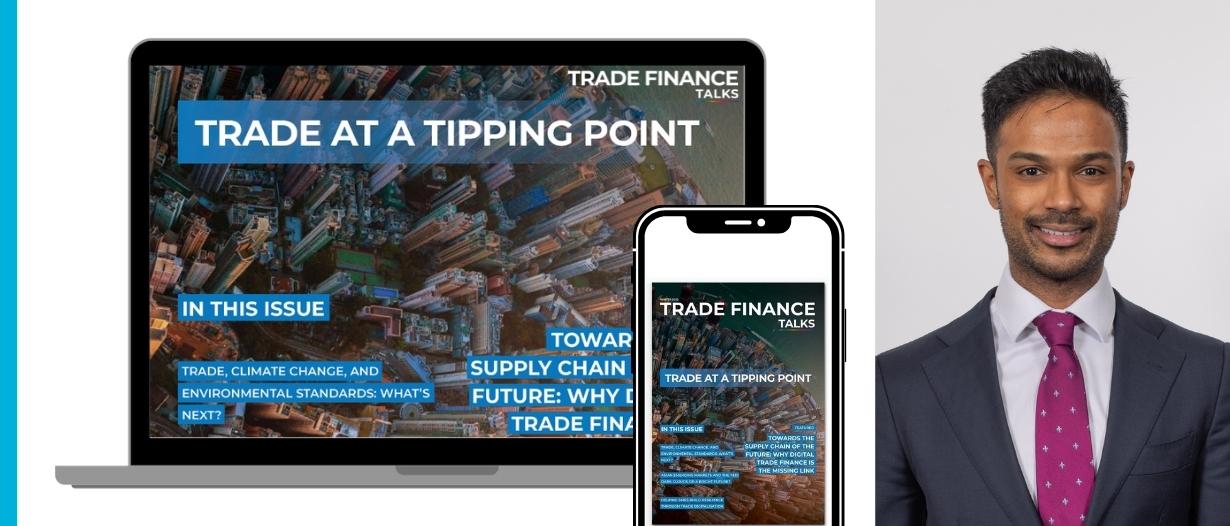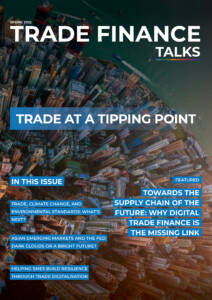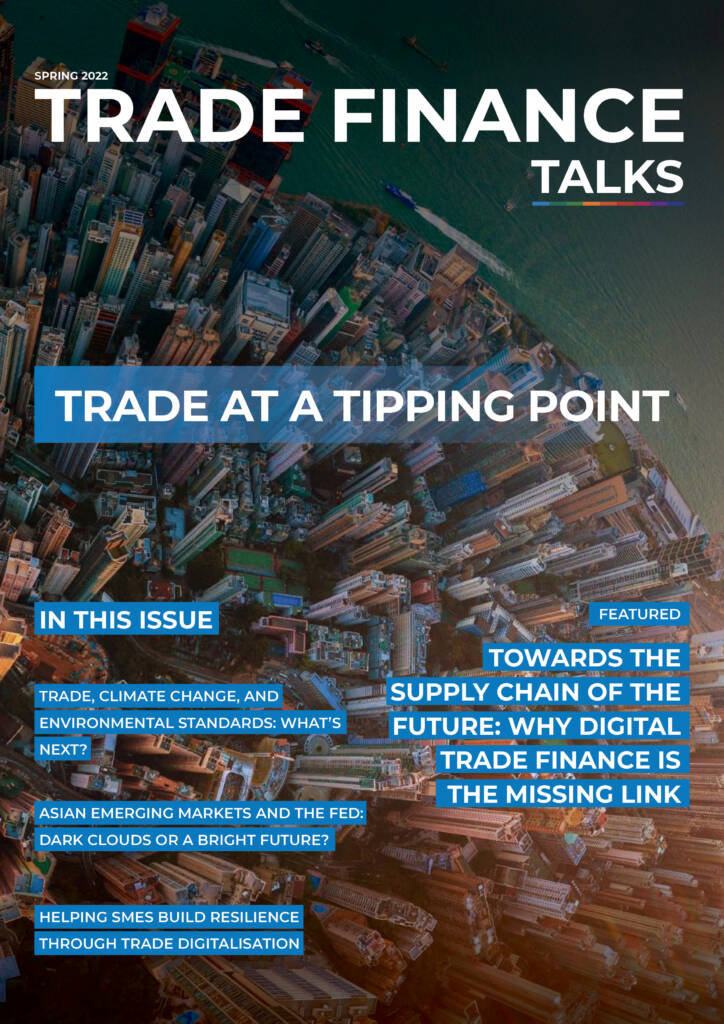Read Trade Finance Talks online (free)
Editor’s note
In the world of trade finance, things can change very quickly.
As 2021 gave way to 2022, we could have been celebrating a new record high for the value of world trade – coming in at $28.5 trillion for the year, according to UNCTAD.
But instead, we are now looking at yet another year of volatility and uncertainty, as Russia – the world’s 11th largest economy by GDP – becomes a pariah state once again, thanks to its aggression in Ukraine.
A number of major western banks and commodities producers have already announced they will be cutting all ties with Russia, and a blanket ban on Russia’s access to SWIFT would reduce one of the world’s largest economies to a financial castaway.
The dust still hasn’t settled, however, and the question of how far Russia will go to neutralise Ukraine, and how far other nations will go to neutralise Russia, remains open.
Cold War 2.0
As the global economy slumps back into a system of multipolarity not seen since the Cold War, what does the future hold for trade finance?
As in the last crisis – that of COVID-19 – we will have to draw on the best of our industry to keep liquidity moving around the world, and to ensure that shelves are stocked, homes are heated, and businesses prosper.
As ever, digitalisation will remain a major theme in this regard, and I am pleased to say that we have had some excellent submissions on this idea from the likes of Emmanuelle Ganne, Ed Lam and Pamela Mar, Andre Casterman, John Omoti, and Enno-Burghard Weitzel and Rebecca Brace.
As we move deeper into 2022, it seems we may be looking to digitalisation not just to deliver trade finance to where it is needed, but also to make sure that it doesn’t stand to benefit the Russian state.
But cutting out Russia from the global economy will beg huge questions for the developed world – particularly for our energy industry.
Can Europe cope without Russian gas? Will oil stay under $100 a barrel without Russian production?
And will a green transition in energy – as promised at COP26 – help or hinder the global economy from an inflation and productivity standpoint?
These questions, too, remain open.
Green finance has come a long way in the last few years, and was definitely in vogue around COP26, but could its progress be undone by a different kind of fossil fuel crisis – that of the loss of a major producer.
On green finance, we are pleased to have the likes of Anna Sands, Irene Gambelli, Diana Rodriguez, and Richard Simon Lewis writing brilliantly in this issue.
We hope you enjoy reading, we thank all of our superb contributors.
Deepesh Patel
Editorial Director, TFG
Welcome to our Spring Edition of Trade Finance Talks by TFG: Trade at a tipping point
What’s inside this Issue?
Introduction
Foreword | A note from the editor – Trade at a tipping point
Featured
2021 – A Year in Review with Trade Finance Global
2022 – Some unreliable predictions
Trade, climate change, and environmental standards: What’s next?
Helping SMEs build resilience through trade digitalisation
In conversation – ITFA’s Lorna Pillow discusses recruitment, education, and women’s choices in trade finance
LIBOR cessation and monetary policy
A world without LIBOR – Perspectives on the transition from ITFA, BAFT, JPM
The Fed’s next steps: Monetary policy and implications for social stability
LIBOR cessation and the transition to alternatives in sterling markets
Sustainability and climate
The role of ECAs in the global economic recovery and green transition – The view from SACE
Grappling with oversupply, decarbonisation, record price volatility – What does the future hold for LNG?
COP26 with Veridapt CEO David Thambiratnam – Finance more, pollute less
To advance sustainable trade finance, agreeing on a common definition is paramount
Learnings from Glasgow: Business exports at the heart of the green revolution
The long game: Assessing the impact of UN Sustainable Development Goals (SDGs) on commodity sectors
COVID-19 and supply chains
Freeports: Levelling up UK trade
The commodities supercycle: What’s in a name?
EBRD’s Rudolf Putz on delivering trade finance to emerging markets during COVID-19, and looking to a greener future
Steady, dynamic growth – Santander’s Bertrand de Comminges on why corporates are moving into supply chain finance
U-shaped recovery – ICISA’s Richard Wulff on trade credit insurance and its bounce back from the pandemic
A look to Asian trade
Asian emerging markets and the Fed: Dark clouds or a bright future?
After two decades of steady growth, are we at a breakthrough moment for factoring in Asia?
Towards the supply chain of the future: Why digital trade finance is the missing link
Fintech versus bank collaboration
The secret sauce: Maximising bank-fintech collaboration opportunities in trade finance
Enigio: An introduction to digitalising bank guarantees end-to-end
Collaboration vs competition: What does the future hold for trade finance platforms?
Quantum leaps for achieving growth targets at banks, FIs are here, thanks to AI, ML, and other game-changing technologies
‘No turning back’ – Bank of America’s Baris Kalay on trade digitalisation after COVID-19
 Australia
Australia Hong Kong
Hong Kong Japan
Japan Singapore
Singapore United Arab Emirates
United Arab Emirates United States
United States France
France Germany
Germany Ireland
Ireland Netherlands
Netherlands United Kingdom
United Kingdom








Comments are closed.